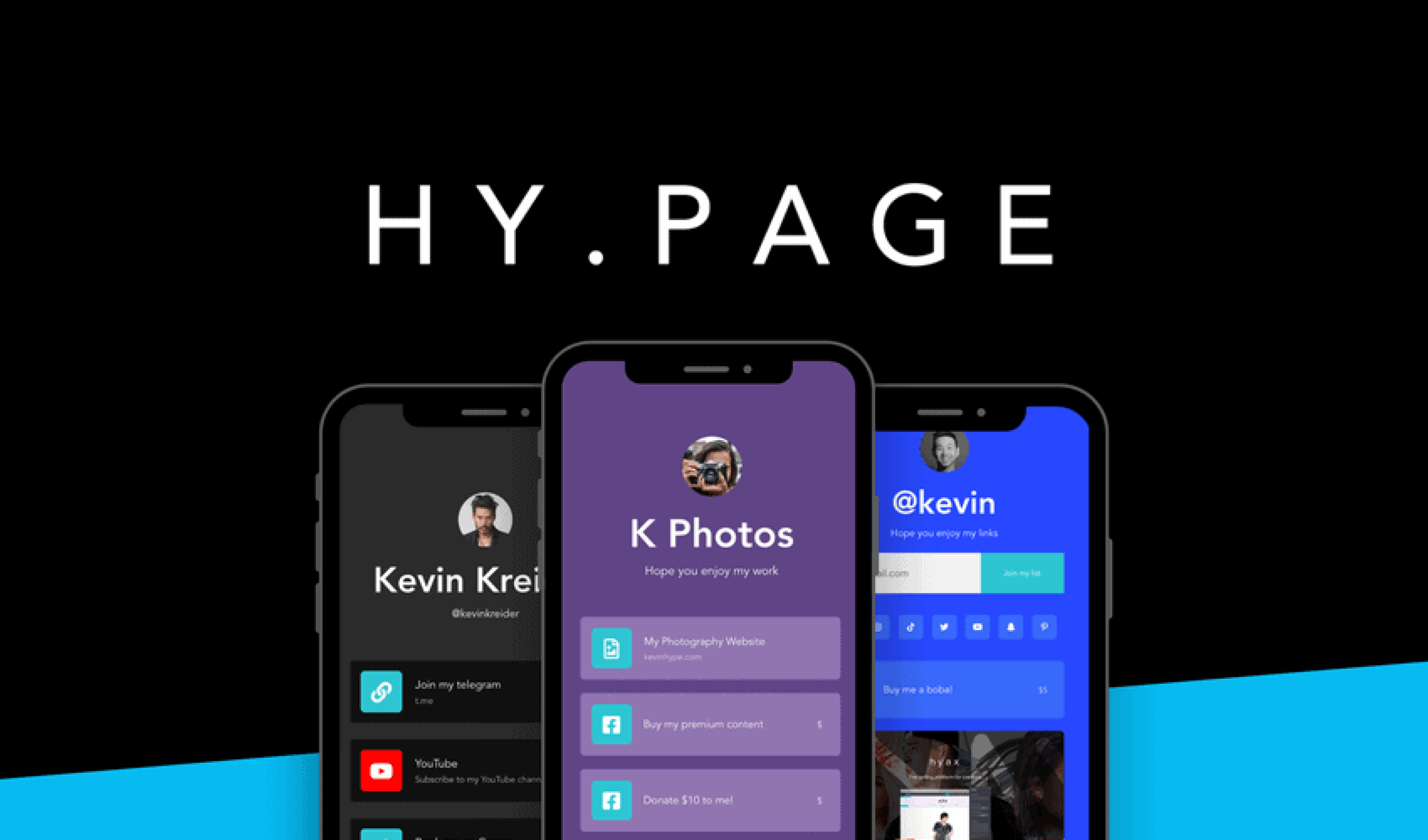50+ Best Apps for Small Businesses
Posted By Visitor Analytics & SEO Tools StellarSphinx.com on 06-05-2023 10:29:12

Description
Entrepreneurship is part excitement, part sheer terror. To help you filter through the noise and get only what you need, we've compiled this list of the essential apps for small businesses.
Ah, the small business hustle. Entrepreneurship is one part excitement, one part sheer terror. The stakes couldn’t be higher and you know you need to grow fast.
To scale your small business, you need to do five things really well:
With the right combination of software tools (plus the unavoidable hard work, long nights, and grit), you could find yourself with a thriving, 6-figure business [case study]
In this blog, I’ve organized some of our favorite small business apps into each of these categories. All apps mentioned here have a 4+ star rating with more than 100 reviews (with only a few exceptions for awesome, lesser-known apps).
(Oh — and keep an eye out for s. Those are our AppSumo partners.)

Awesome Apps for Small Businesses
1. Manage your money wisely
Proposals and invoicing
Sure, you can create PDF invoices on your own. But if you want to skip the manual labor, offer credit card payment options (for a fee), and send naturally-stylish invoices, you may consider using an invoicing app:
Agiled – Agiled is an all in one app in which you can create professional proposals, invoices and contracts. You can also accept online payments on invoices. Agiled is best for small businesses, agencies, and freelancers.
Freshbooks – Freshbooks is a cloud-based accounting software specifically geared toward small business owners and freelancers.
Quickbooks – Because Intuit also owns TurboTax and Mint, Quickbooks has a distinct focus on tracking income and expenses for tax purposes.
Payroll
Time to pay the team. Fortunately, there are several payroll and HR apps designed specifically to help small businesses do it all: payroll, time tracking, 401Ks and benefits, sick days, W-2s and 1099s.
Gusto – Formerly ZenPayroll, Gusto allows employees to access an online portal to view their payments and benefits. Plans start at $45/mo.
Square Payroll – Square has an app that your employees can use on-the-go and plans start at $34/mo.
Online payment processing/POS
It’s one thing to manually create and send an invoice. It’s another to set up an online store that’s fully automated, where customers can spend money on your business even while you count sheep.
That’s the benefit of configuring an online payment processor like:
Stripe – Built for developers, Stripe is a flexible, customizable solution for processing online payments. The downside, of course, is that some complain you need some technical chops to take full advantage of it. Pricing starts at 2.9% + 30¢ per successful charge but they do offer custom pricing for enterprise clients (good to know if you plan to become a unicorn startup).
PayPal – Paypal does have credit and lending options, and has been a long-standing player in the online payment space. While creating an account is technically free, you’ll pay 2.9% + $0.30 per transaction.
Square -With a magstripe credit card reader, you can manually swipe cards if you’re at a tradeshow or shady street corner (for when you absolutely need that taco fix). Expect to pay 2.75% per swipe, dip, or tap and 3.5% + 15¢ for every keyed-in transaction.
2. Grow and keep your customer base
CRM
Don’t let any of your potential leads slip through the cracks. The right CRM helps your team segment and track the customer journey along your sales funnel. You’ll know when and where to send each promotion or follow-up.
There are several popular CRMs to choose from:
Salesforce – The king of CRMs, we couldn’t *not* mention cloud-based Salesforce. Unlike other options, Salesforce has a social media integration but doesn’t have a marketing automation integration. Prices start at $25/mo/user.
Hubspot CRM – As a freemium resource with optional paid marketing add-ons, Hubspot is a great option for small biz pipeline management. But note there’s no internal chat integration (this might be a good thing?).
Pipedrive – Pipedrive is the only CRM on this list that gives users a mobile app. They also have a focus across the US and EU. Prices start at $15/mo/user.
Agile CRM – Agile is now free for up to 10 users (prices start at $8.99/mo/user after that). Agile is a bit leaner in terms of enterprise-level features compared to some of the other options on this list, but they do have a robust social media brand monitoring tool and website engagement tools.
Social media
To scroll, or not to scroll, that is the question. Social media management apps equip you to control social media, instead of the other way around. Schedule posts, collect relevant metrics, and stay fresh.
Here are a handful:
Hootsuite – This is the high-power player in the world of social media management tools. In addition to the main channels, you can manage Youtube channels and WordPress blogs too. Starts at $29.99/mo (billed annually).
Sprout Social – Social media is all about fostering relationships. Sprout Social offers many management tools. But what really differentiates their service is the social media CRM to help you better understand your customers. Prices start at $99/mo.
Buffer – Buffer starts at $15/mo. It’s more affordable than Hootsuite while offering many of the same tools, including being able to manage your social media in one place and schedule posts.
SEO & content marketing
Want to get on Google’s good side? Follow the best practices of search engine optimization: create relevant content, use clear keywords, and turn your website into a resource for topics in your industry.
It’s harder than it sounds…but the right SEO tools can make it a lot easier.
SEMrush – One of the most widely used SEO tools, SEMrush is packed with tools to help you perform keyword research, plus a myriad of tools to make article optimization much more straightforward. Prices start at $99.95/mo.
Ahrefs – Another major SEO player, Ahrefs offers similar services and tools to SEMrush. However, Ahrefs’ angle is backlinks. It has an incredibly accurate backlink tool that helps you understand who is linking back to certain websites. Prices start at $99/mo.
Webtexttool – Today, you’ve gotta create enough content to satisfy the masses. It’s easier when you have machine learning and artificial intelligence powering your content. Webtexttool helps you create relevant, quality content that’s optimized for search. Prices start at $18/mo.
Email collection
Come on, you know the best in the biz: Sumo.com #shameless
Sumo configures with your website to help you collect email addresses, so you can start promoting your ideas, selling your products, and finally have more than four email list subscribers. (Thanks for the follow, Mom.)
Newsletters & drip email campaigns
After you’ve installed Sumo, you’ll want a software to manage your email list so you can update all your new followers. Try:
Sendfox – Designed with content creators in mind, Sendfox is a convenient and cost-effective email marketing solution, providing you with just the essentials that you need to start making money with email.
MailChimp – If you haven’t heard of MailChimp, you’ve probably never sent an email (I’m only slightly exaggerating). But seriously, MailChimp is geared toward businesses of all sizes. It helps you build a following through landing pages, send sleek newsletters or promotions, and is fairly easy to use. Pricing starts at Free99 ($0) and goes up based on your number of subscribers.
Snov.io – Snov.io is an email outreach software that focuses on turning email opens into new customers. They specialize in cold outreach and drip campaigns. Just upload a list of contacts, create a focused marketing campaign, click send, and watch the email-marketing magic unfold. Prices start at $29/mo.
Constant Contact – Another go-to email service, Constant Contact is easy to use and offers many of the same services as MailChimp. One of the biggest elements that sets them apart from MailChimp is their customer support. Constant Contact is known for being there when you need them. Prices start at $20/mo.
Chatbot
One of the least-invasive, customer-serving marketing tools today is the chatbot. Let prospective customers ask questions without making them feel like they immediately have to say “I do.”
Popular options include:
Intercom – Intercom offers an advanced chatbot that can be integrated on your website to improve customer service and marketing. Intercom is the biggest player in the chatbot business. Prices start at $49/mo. for select startups, but their normal pricing begins at $136/mo.
ActiveChat – ActiveChat is a simple tool to integrate onto your website. It is great for people who want a low-cost, easy-to-install chat service. Prices start at just $19/mo.
3. Get sh*t done
Project management
Keep tabs on those tasks. It’s easy with one of these myriad apps. The biggest difference between these apps is user interface, but they all offer the same basic project management functions.
MeisterTask – Organize your work by columns. Each column represents a different step in the tasks completion timeline. Prices start at $8.25/mo./user.
Asana – Asana is structured top-to-bottom, like a checklist. As projects get closer to completion, they can be moved down into the next category. This is a freemium service.
Monday.com – Here, projects follow a calendar-style format. This helps users plan to accomplish certain tasks within the days assigned to the task. Prices start at $25/mo.
Basecamp – Basecamp (formerly 37signals) lets you compartmentalize every aspect of your business into different sections. You can look at to-do lists, then jump to conversations with clients, then switch to a calendar. It’s $99/mo.
Scheduling
Part of scaling your small business is planning your schedule wisely. Consider letting the software do the hard work for you. Try:
Book Like A Boss – This handy-dandy scheduling app was built for small business owners. It combines client scheduling with easy payment methods, so solopreneurs can, well, book like a boss. It starts at $9/mo./user.
Calendly – Calendly understands that sometimes you need buffer time between things on your schedule. If one meeting ends at 3 and the next starts at 3, you can add a buffer that allots time in your schedule to pour yourself another cup of coffee, finish jotting down notes post-call, or call your mom to tell her how great your business is going. Prices start at $8/mo.
Google Calendar – This one is completely free and is easy to use because sooo many people use it every day. When you send a Google Calendar invite to a meeting, most people know what to do.
Docs
Apps are cool and all, but many of us spend most of our working hours in docs and spreadsheets. It’s good to know about the best ones.
Our favorites:
G-suite – Work in collaboration with your team in real-time, share documents flawlessly on the web, and give users varying permissions (to make sure you-know-who can’t ruin all your hard work). Google Docs is one of the most popular word processors in the world. Oh, and it’s free.
Dropbox Paper – Paper is a free word processing app from Dropbox that incorporates simple design elements that let you know what a final product will look like when it’s complete. Paper allows simple multimedia integration and many of the aspects people love about Google Docs (like commenting features).
Coda – Self-described as a “doc as powerful as an app,” Coda tries to reimagine what’s possible in docs. They essentially let you do a heck-of-a-lot more things than you ever thought docs could: create tables that talk to each other to show data in different formats. Make docs on your desktop perform like native apps when you open them on your phone. Dude, it’s so cool. Also, it’s free.
To-do lists & notes
At the top of your mental to-do list should be downloading one of these digital to-do list apps (#JustSaying):
Notejoy – This is a team-oriented note-taking and to-do list app. Imagine Slack for note-taking: you can have private notes just for you, but also have group notes for easy collaboration with your entire team. Notejoy is $100/yr.
Evernote – One of the most popular note-taking apps, Evernote could have been categorized under Project Management for all its collaboration and categorization abilities. It’s a note-keeping app that goes above and beyond to keep you organized. It’s $2.70/mo./user.
Time tracker
Whether you’re billing by the hour or need to figure out where all your time has gone (turns out it actually is the cat memes after all), get yourself a time tracker:
Web Timer – This is a simple, free web time-tracking plugin. It connects easily to web browsers and gives you a pie-shaped breakdown of how you spend your time online.
toggl – This app tracks your time online to help you run your business with greater focus. It alerts you when it notices idle time. It tracks how much time you spend on specific projects so you know what your hours are worth. Pricing starts at $10/mo.
4. Communicate
Calling and online conferencing
You say: “Is this a voice or video call?” What you really mean: “Do I have to wear pants?”
Meetings are still the worst, but they’re better with good conferencing software. And if you’re working remotely, having a great conferencing app for your meetings is a must-have. Try one of these:
Zoom – Zoom is a comprehensive video conferencing platform. They prioritize offering great video and voice quality, as well as many functions to keep you organized and on top of your meetings. It’s free for personal meetings but starts at $14.99/mo. for all the valuable add-on functions.
Skype – If you’re looking for the bare minimum, basic video communication tool, Skype works great. Skype also starts free but has fees for various other types of calls.
GoToMeeting – Similar to Zoom, GoToMeeting offers robust conferencing offers that make collaboration and remote meetings much simpler (and clearer). GoToMeeting prices start at $14/mo.
Vectera – If you are meeting a lot with people outside your organization, Vectera offers simple URL-based access and powerful whiteboarding in virtual meeting rooms. We use Vectera at AppSumo every day to meet new partners. Starts at $8/month. (Plus, get a special treat for mentioning AppSumo when you buy.)
Chat and messaging
Don’t email me if it can be sent in Slack or Chanty, that’s all I have to say about that.
Slack – Slack is the most famous professional messaging platform. You can ping friends, send clever emojis, and keep your whole team organized by pulling everyone into the same conversation, even while they’re out of office. It’s $6.67/mo./user.
Chanty – Chanty is a messaging app built for small businesses. They’re more affordable, but offer the same private and group chat functions that make Slack so useful and popular. Chanty offers most of its services for free up to 10 users. For full functionality, it’s $3/mo./user.
Easy automation
Today, you can make your Echo talk to your fax machine. Actually, probably not. But you can make your Echo schedule appointments, automatically send emails, and turn off the lights at the end of the day. And if you figure out how to make it send a fax, hit me up, I’ll be really impressed.
To IoT your work life, try:
IFTTT – IFTTT (If This Then That) is a free systems automation tool that lets you easily set up new commands for everyday tools. They connect the digital services you use every day to keep simple tasks moving without your continuous interaction. IFTTT is built primarily for your home. For more advanced functions, pricing starts at $5.
Zapier – Zapier offers many of the same benefits as IFTTT, except it is built specifically for connecting professional services. They help you automate your work routines. It’s free for the first 5 “Zaps” and then starts at $20/mo.
5. Get creative
Image editing and graphic design
Make your business graphics Instagram-worthy with:
Photoshop – The mother of all design apps, Photoshop has been around for years. It offers diverse functionality, great quality, and is respected by designers across the world. Prices start at $9.99/mo. (with student discounts available).
Canva – This web-based graphic editor is another famous design tool. It is very simple to use (literally just drag and drop) and the basic features are free. It offers templates to make designing for specific platforms simple (i.e. a blog or social media post). Pro plans start at $9.95/mo.
Stencil – Stencil is similar to Canva in function. It offers simple drag-and-drop graphic creation. However, Stencil also has a plug-in that lets you edit photos without leaving your current webpage—you don’t have to flip back and forth between screens just to edit a photo. Pricing starts at $9/mo. (but it also offers a free version).
Video editing
Video is all the rage these days, so you might want to get with the program. Here are some popular editing programs to consider:
Final Cut Pro – This Mac application is popular for creating professional-tier videos on your computer. It’s a one-time price of $299.
Premier Pro – Another popular Adobe product, and the other most popular video-editing software, Premier Pro is available for most computers (no Apple biases here). Prices start at $239.88/yr.
For more information, please Click HereRelated Blogs
7 Men's Clothing Essentials To Maximize Style Statement
Benefits of using electronic cigarettes
Moist skin without stickiness even in summer
What is a Local SEO Audit?
Self-control it’s easier than you think
Ratings & Review
Popular Blogs
Climate Change Amnesty International
It’s easy to take our planet for granted until we see the human cost of its degradation: hunger, displacement, unemployment, illness and deaths. Millions of people are already suffering...
Free for dev - list of software-2 (SaaS, PaaS, IaaS, etc.)
Developers and Open Source authors now have a massive amount of services offering free tiers, but it can be hard to find them all to make informed decisions. This is a list of software (SaaS,...
Free for dev - list of software-3 (SaaS, PaaS, IaaS, etc.) (SaaS, PaaS, IaaS, etc.)
Developers and Open Source authors now have a massive amount of services offering free tiers, but it can be hard to find them all to make informed decisions. This is a list of software (SaaS,...
Recently Added Blogs
7 Men's Clothing Essentials To Maximize Style Statement
In today's fashion landscape, men's clothing basics are more than just attire—they define style and personality. Owning a solid wardrobe filled with style statements is the key to putting together...
Benefits of using electronic cigarettes
E-cigarettes have become a popular item for both smokers and nonsmokers in recent years. So, what are the attractions of e-cigarettes and what are the advantages of starting to use them? Here,...
Winter Skin Care
Winter Skin Care: 9 Measures You Need to Take Now Have you ever had that experience where you think you're doing a good job of moisturizing your skin every day, but then you realize it's...
Login to your Be found - Be connected account

Sign in by Email
Sign in with Social Media
Simple and convenient way for loggingNo Account yet? Click here to signup
Already have an account? Sign In
FEEDBACK / SUGGESTIONS
Give us your valuable feedback to make website more user friendly


Leave your details below







